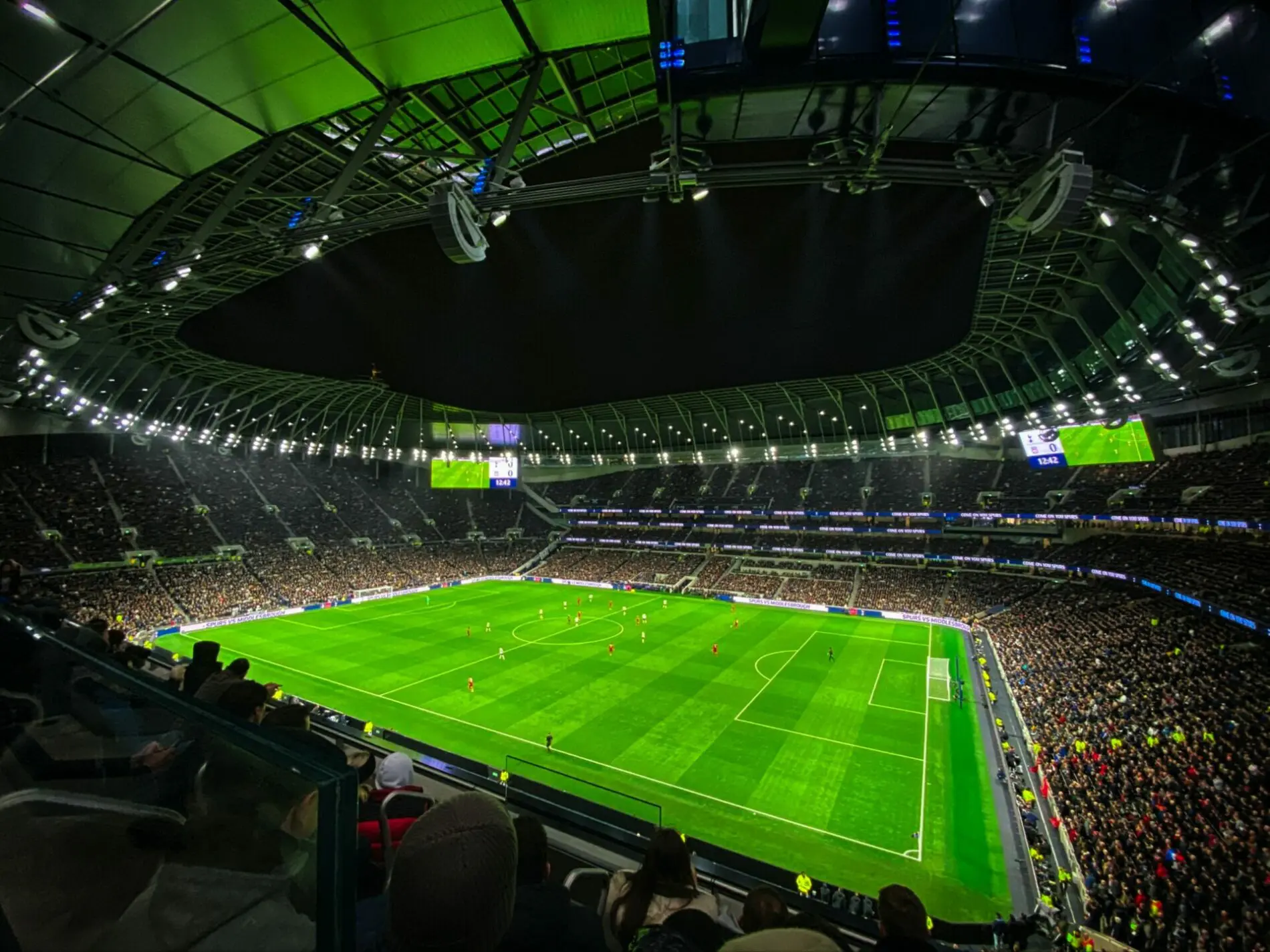Introduction: The Environmental Impact of Sporting Events
Sporting events bring people together, generating excitement and camaraderie. However, they also come with a hefty environmental price tag. From massive waste production to significant carbon emissions, the impact of large-scale games stretches far beyond the final score. As awareness grows about climate change and sustainability, many organizations are beginning to rethink their approach. It’s time for sports to step up and embrace a greener future—one that prioritizes our planet while still celebrating athletic prowess.
Greening the game is not just a trend; it’s an essential movement that can redefine how we experience sports. Imagine stadiums powered by renewable energy sources or uniforms made from recycled materials. Picture fans arriving via public transport or biking instead of driving, all contributing to reduced emissions. This shift toward sustainable practices doesn’t just help the Earth—it enhances the overall sporting experience for athletes and fans alike! Let’s dive into some innovative initiatives shaping this bright future in sports management today.
Benefits of Going Green in Sports
Going green in sports brings a host of benefits that extend beyond environmental conservation.
First, it enhances the image of organizations. Fans appreciate teams that prioritize sustainability. This connection fosters loyalty and community support.
Second, reducing waste leads to significant cost savings. By implementing recycling programs and efficient resource management, venues can cut expenses while promoting eco-friendly practices.
Third, athletes often feel more motivated when competing in sustainable environments. Knowing their efforts contribute to a healthier planet can boost performance on and off the field.
Additionally, going green attracts sponsorships from environmentally conscious brands looking to align with values-based initiatives. This collaboration opens new revenue streams for teams and events.
Greening efforts inspire fans to adopt sustainable habits too. When spectators see their favorite players championing ecological responsibility, they’re likely to follow suit at home and in everyday life.
Sustainable Initiatives for Venues and Facilities
Many sporting venues are embracing sustainability by implementing innovative initiatives. Solar panels are becoming a common sight on rooftops, harnessing renewable energy to power facilities. This reduces reliance on fossil fuels and cuts operational costs.
Rainwater harvesting systems capture precipitation for irrigation and restroom use. Such measures not only conserve water but also minimize runoff that can harm local ecosystems.
Waste management is another focus area. Venues are investing in recycling programs and composting stations, ensuring that fans leave behind less waste during events.
Green building certifications like LEED help guide construction projects toward eco-friendly practices. These standards promote energy efficiency and sustainable materials across new developments or renovations.

Additionally, many facilities now feature natural landscaping instead of traditional turf fields. Native plants require less water and maintenance while providing habitats for wildlife, further enhancing the venue’s connection to nature.
Eco-Friendly Equipment and Uniforms
The shift toward eco-friendly equipment and uniforms is reshaping sports. Athletes are now donning gear made from recycled materials, like plastic bottles transformed into high-performance jerseys. This innovation not only reduces waste but also raises awareness about sustainability.
Brands are increasingly investing in sustainable manufacturing processes. Water-saving techniques and non-toxic dyes contribute to a greener production cycle. The result? Uniforms that look great while being gentle on the planet.
Additionally, lightweight biodegradable options for sporting goods are emerging. These alternatives perform well but break down naturally after use, minimizing landfill contributions.
As consumers become more environmentally conscious, teams are recognizing the power of eco-friendly branding. A commitment to sustainability resonates with fans and fosters loyalty in an era where environmental responsibility matters deeply. The ripple effect of these choices can inspire the next generation of athletes to prioritize both performance and planetary health.
Promoting Sustainable Transportation for Fans and Athletes
Sustainable transportation is a crucial aspect of greening the game. Encouraging fans and athletes to choose eco-friendly options can significantly reduce carbon emissions associated with sporting events.
Public transport systems are stepping up their efforts. Many venues now offer special shuttle services that utilize electric buses or hybrid vehicles, making it easier for attendees to leave their cars behind.
Creating bike lanes and providing secure bike parking also fosters a greener approach. Fans can pedal their way to games while getting some exercise in the process.
Carpooling initiatives have gained traction too. By incentivizing groups to share rides, teams promote community spirit while minimizing environmental footprints.
Event organizers often partner with ride-sharing companies focused on sustainability, ensuring that travel options align with green goals. These steps not only benefit the planet but enhance fan experiences by reducing congestion around venues as well.
The Role of Technology in Reducing Carbon Footprint
Technology is reshaping the landscape of sports by introducing innovative ways to cut down on carbon emissions. Digital platforms help teams and venues track their environmental impact in real time, allowing for smarter decision-making.
Smart energy management systems optimize power usage during events, reducing waste significantly. LED lighting has become standard, providing brighter illumination while consuming less electricity than traditional options.
Moreover, apps designed for fans enhance travel efficiency. They offer real-time transit updates and carpooling opportunities, making it easier for spectators to choose eco-friendly transport methods.
Wearable tech also plays a part. Athletes can monitor their performance and health metrics more effectively, minimizing excess energy expenditure from training routines.
By incorporating these technological advancements into sporting ecosystems, we pave the way for a greener future that resonates beyond the field or court.
Success Stories from Green Sporting Events
Several sporting events have made significant strides in sustainability, showcasing what’s possible when commitment meets creativity. The 2010 Vancouver Winter Olympics set a high bar by implementing green building standards and sourcing local food for the athletes’ village.
Similarly, the 2014 FIFA World Cup in Brazil incorporated eco-friendly practices throughout its venues. Many stadiums were equipped with solar panels, reducing energy consumption significantly.
In more recent years, the Tokyo 2020 Olympics embraced recycling on an unprecedented scale. Medals were crafted from recycled electronics, emphasizing a circular economy approach.
Even smaller events can make notable changes; local marathons are increasingly opting for zero-waste policies. They encourage runners to bring their own water bottles and utilize biodegradable materials at aid stations.
These success stories illustrate that greening the game is not just feasible but also beneficial across all levels of sports.
Challenges and Solutions
Transitioning to sustainable practices in sports isn’t without its hurdles. One significant challenge is the initial cost of implementing green technologies and infrastructure. Many organizations hesitate due to tight budgets.
Education also plays a crucial role. Athletes, staff, and fans may not fully understand the benefits of eco-friendly initiatives. Without awareness, support for these changes can wane.
However, solutions exist. Partnerships with environmental organizations can provide valuable resources and insights on best practices. Grants and sponsorships aimed at sustainability can help alleviate financial burdens.

Engaging athletes as ambassadors for green initiatives creates a ripple effect within their communities. Their influence can inspire fans to adopt more environmentally friendly habits.
Innovative approaches like fan engagement campaigns encourage participation in recycling efforts during events or using public transport options instead of personal vehicles, fostering a culture of sustainability both inside and outside stadium walls.
Frequently Asked Questions
As the movement for sustainable sports gains traction, many questions arise. Here are some common inquiries about greening the game.
What does “greening the game” mean?
Greening the game refers to implementing eco-friendly initiatives in sports. It encompasses everything from reducing waste at venues to promoting sustainable transportation options.
How can fans contribute to sustainability at sporting events?
Fans play a crucial role by adopting green behaviors. They can use public transport, recycle materials, and support teams that prioritize sustainability.
Are all sports organizations focusing on sustainability?
While not every organization is on board yet, an increasing number are recognizing its importance. Many leagues and associations have set ambitious targets for reducing their environmental impact.
What types of eco-friendly equipment are available?
There’s a growing range of eco-friendly gear available today. From recycled materials used in uniforms to biodegradable balls, athletes now have more sustainable choices than ever before.
How does technology help reduce carbon footprints in sports?
Technology plays a pivotal role through innovations like energy-efficient lighting systems and smart stadiums that optimize resource usage during events.
Is going green expensive for sporting organizations?
Initially, it may involve costs associated with transitioning towards greener practices. However, many find long-term savings through reduced energy consumption and waste management efficiency.
The journey toward sustainable sporting practices is ongoing. As awareness grows and innovative solutions emerge, there’s hope for greener games ahead.











